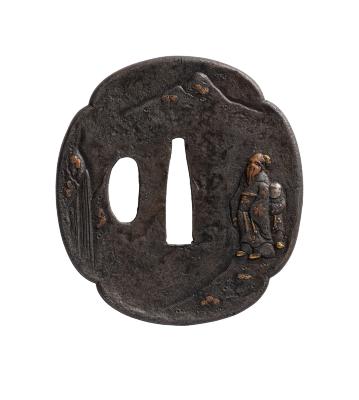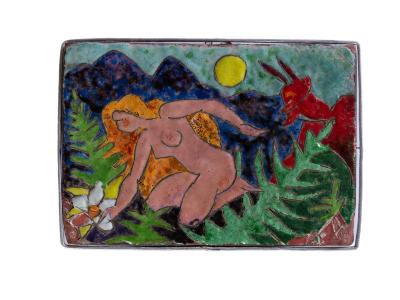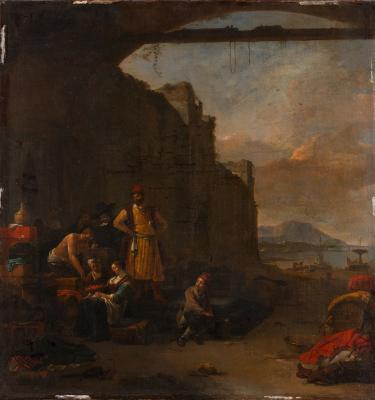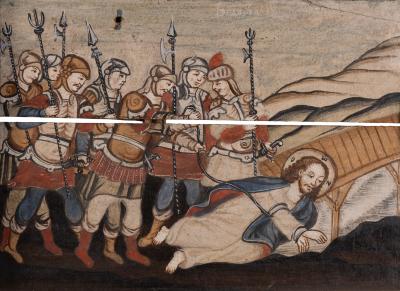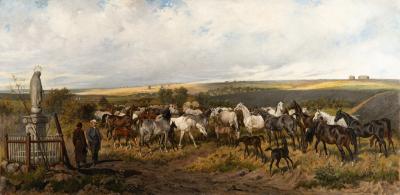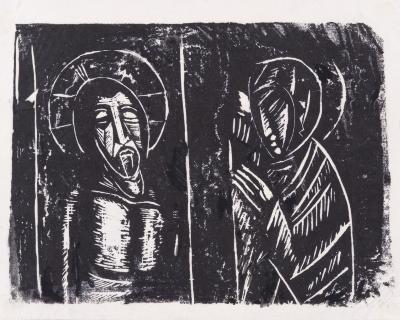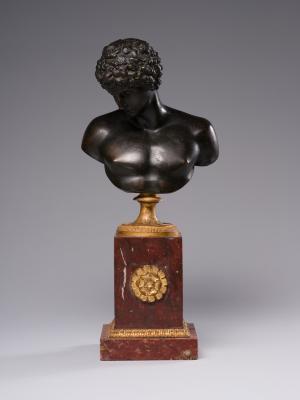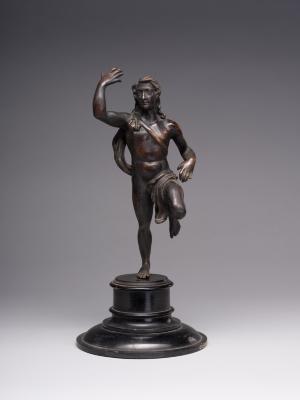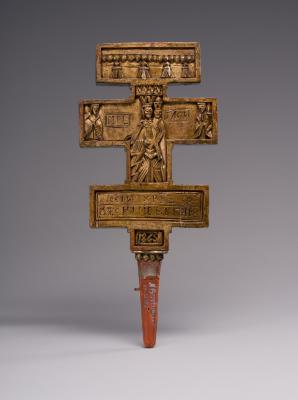Bartolomeo Pinelli performed the first work titled La Lanterna Magica (Magic Lantern) for Raccolta di Cinquanta Costumi Pittoreschi (Collection of Fifty Picturesque Costumes), released in 1809. However, the most known works were unpainted engravings dated back to 1815. The dome of St. Peter's Cathedral in Rome is depicted in the background of these engravings. The area corresponds to the Trastevere district, where Bartolomeo Pinelli lived and from where the cathedral dome could be seen from the south. An unpainted engraving in the version without the cathedral dome was presented in the album Nuova Raccolta di Cinquanta Costumi Pittoreschi incisi di acqua forte (New Collection of Fifty Picturesque Costumes), published by Giovanni Scudellari in Rome in 1817. The work was probably created in 1816. The artist presents a street scene, where in the middle of the square, the actor shows the public a "magic lantern" or a phantoscope, which looks like a large box with a turret. The actor lifts the top of the box to illuminate the picture inside. The public looks closely through the side holes of the box. Next to the actor is his wife, who accompanies the hurdy-gurdy, and their young son, who feels sad. The engraving is painted with bright watercolours, with prevailing red, blue, yellow, and green ones. In 1844, the album with 27 engravings by Bartolomeo Pinelli was released, which included selected scenes of carnival, games, actions, and street scenes, as well as this engraving.






